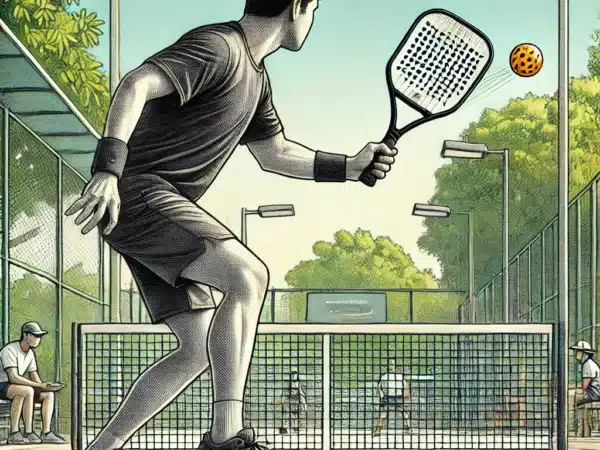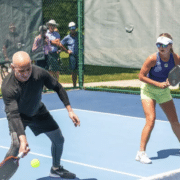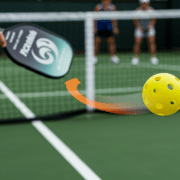Frontal strike (candle) technique in pickleball

This article will reveal the secrets of executing an effective lob, or candle, a high, arcing pickleball shot that will help you win points and control the game.
Page contents
What is a forehead in pickleball?
A candle or lob is a shot that sends the ball high into the air in an arcing trajectory. There are two main types of lobs:
- Protective forehead: It is characterized by a very high and steep trajectory. Its purpose is to force opponents to perform an overhead.
- Offensive forehead: It has a flatter trajectory, similar to a rainbow, passing just above the outstretched arms of the opponents. The goal is to directly win a point.
The main difference is in the racket position and the direction of movement after impact. For a defensive forehand, an open racket is used, pointing upward, and a vertical movement after the stroke. For the offensive forehand, the racket is held at an angle and the movement after the stroke is directed upward and forward.
Tips for performing the perfect forehead
- Preparation:
Prepare for a lob the same way you would for a drop or a dink. It is important to disguise your intention because the lob is effective when it is unpredictable. You need to hit the bottom of the ball in front of you using a short swing. - Forehand advantage:
The forehand lob is generally lighter and more stable than the backhand. Try to position yourself so that the ball is on the forehand side. - Position on the court:
It is best to perform a forehand near the line of the area where you cannot hit the ball on the fly (kitchen). - Targeting the non-racket side:
This will force opponents to run the ball or hit the backhand, which is often their weakest point. If you aim at your opponent’s forehand, you can give them an easy opportunity to perform an overhead. - Target selection:
The forehand is effective when it forces opponents to move around the court. Aim for the opponent with the worst mobility or shortest height.
The forehead is an effective pickleball punch, especially if you use these tips. However, don’t overuse foreheads – always remain unpredictable in your choice of strikes.
Frequently asked questions and answers
A forehand is a high shot that sends the ball into the air in an arc trajectory. Its purpose is to force the opponent to perform a difficult shot or win a point.
Protective forehead: Has a high and steep trajectory. It is used to force the opponent to perform an overhead.
Offensive forehead: It has a flatter trajectory, passing just above the opponent’s outstretched arms, allowing you to attack.
For a defensive fore hand, use an open racket pointing upward and a vertical motion after the stroke.
For an offensive forehand, hold the racket at an angle and direct the motion upward and forward.
Disguise your intention so that your forehead becomes unexpected for your opponent.
Strike the bottom of the ball in front of you using a short swing.
The forehand lob is usually easier to execute, more stable, and allows for better ball control. Position yourself so that the forehand is the most likely to be hit.
The lob is best performed near the kitchen line, an area where you can’t hit the ball on the fly. This provides more space for a high shot.
Aim for the side without a racket, forcing your opponent to play a backhand or run around the ball.
If your opponent has poor mobility or short stature, direct the punch in their direction.
Don’t overuse foreheads – use them unpredictably.
Make sure that the trajectory of the ball is high enough to avoid the possibility of an opponent’s overhead.
The forehand is effective when it forces the opponent to change position, especially if he has a weak backhand or low mobility.
The lob allows you to:
Control the pace of the game.
Win points with unexpected and accurate shots.
Force your opponent to perform difficult shots or change their position.












